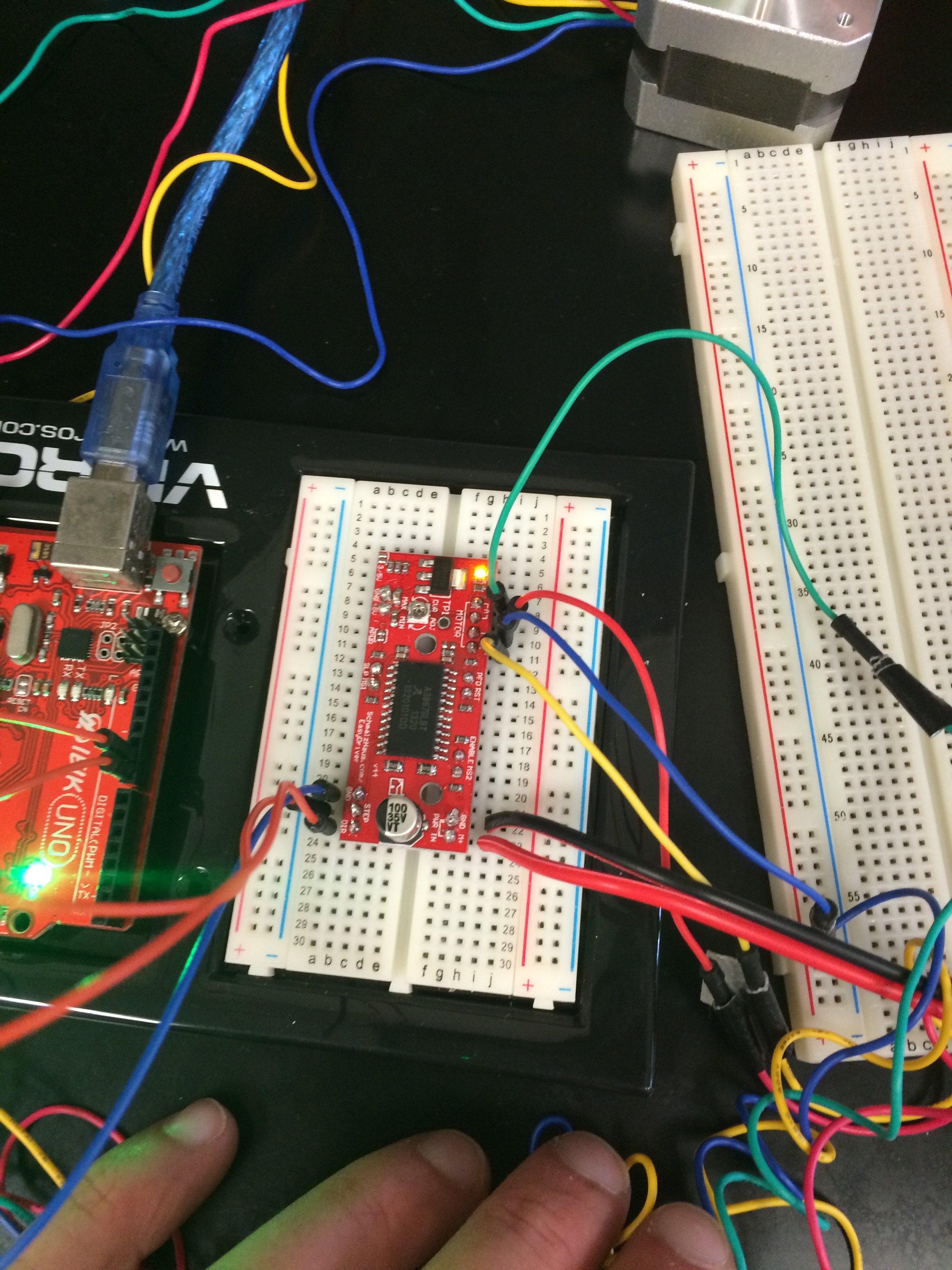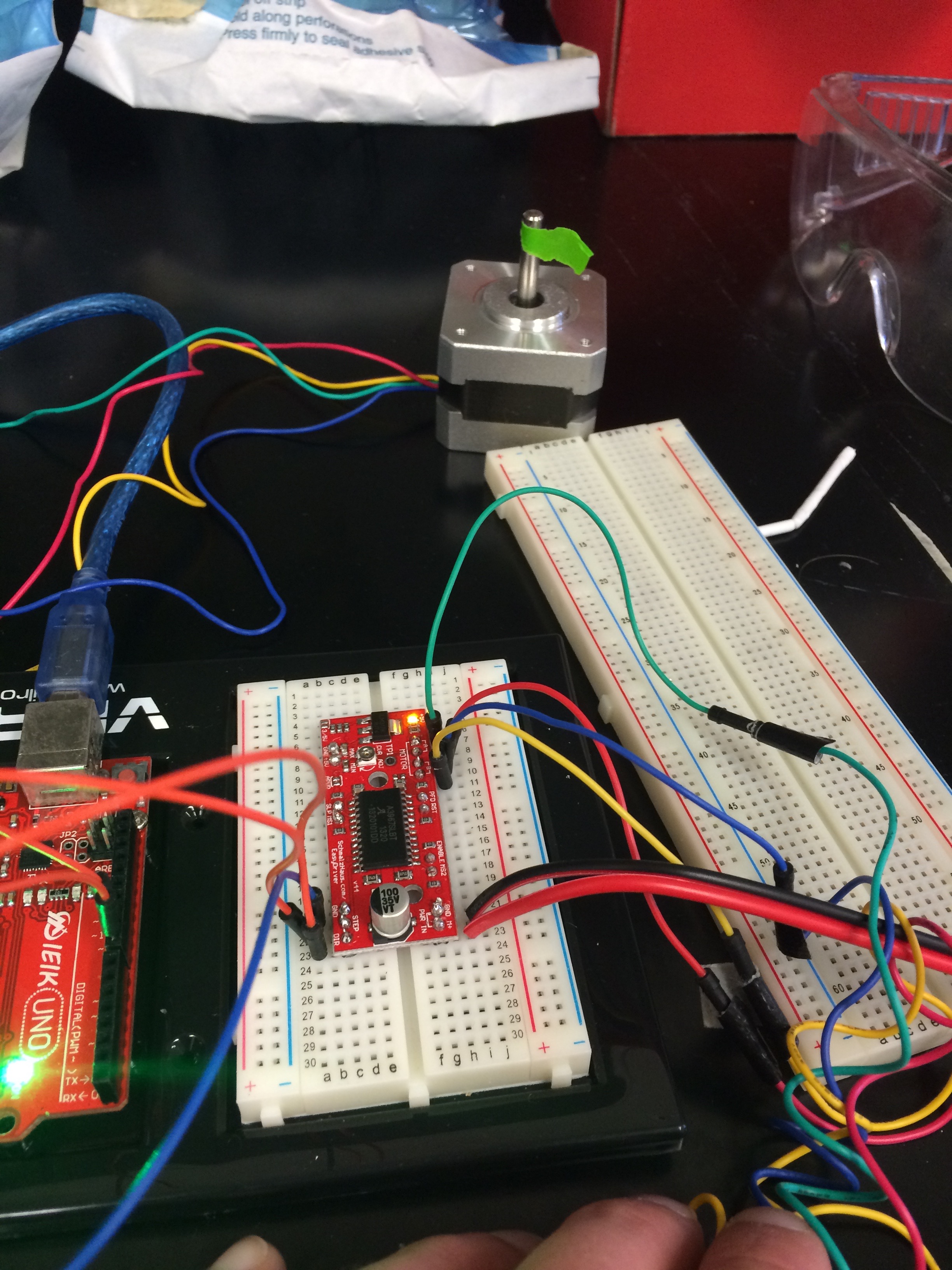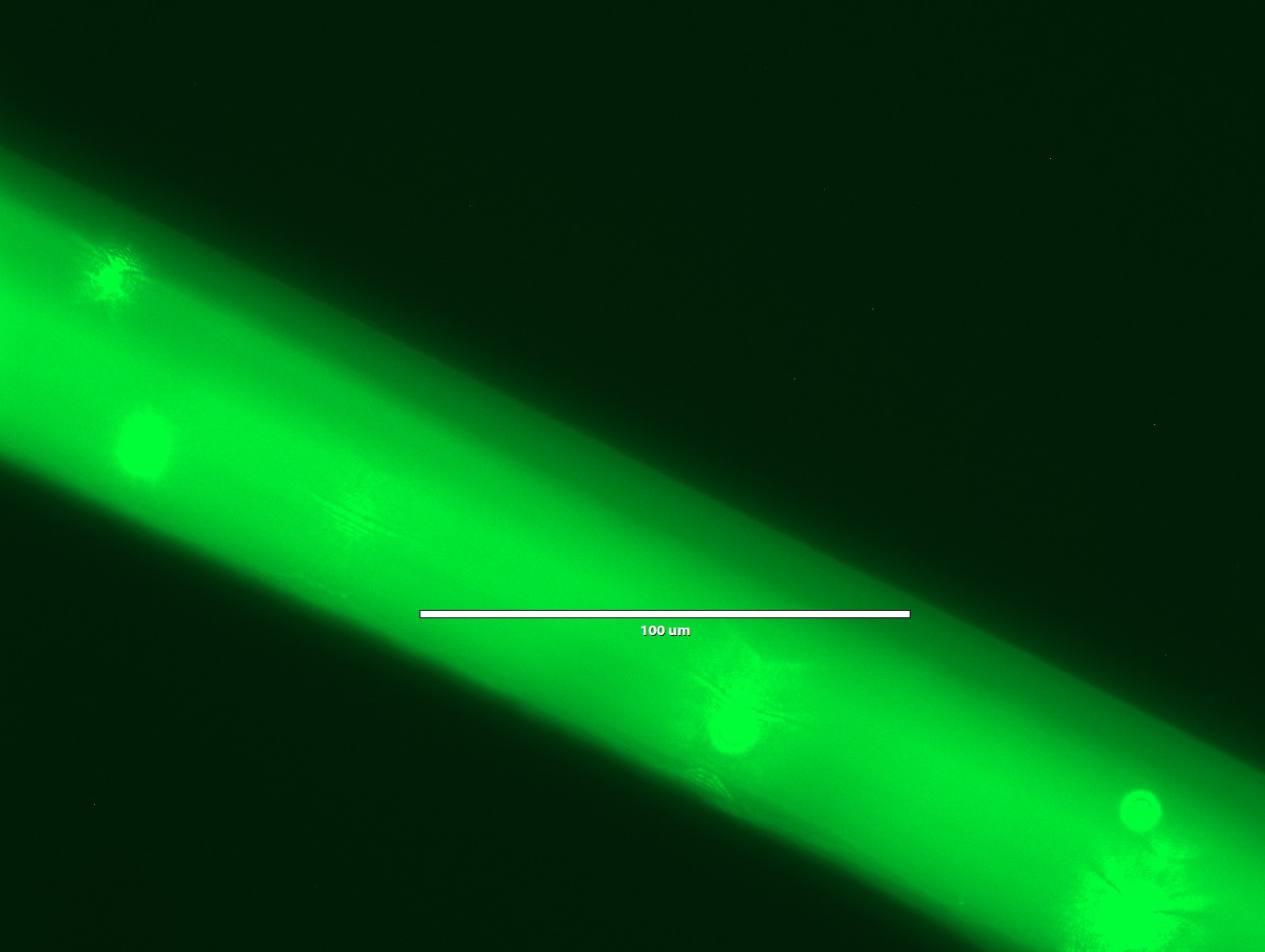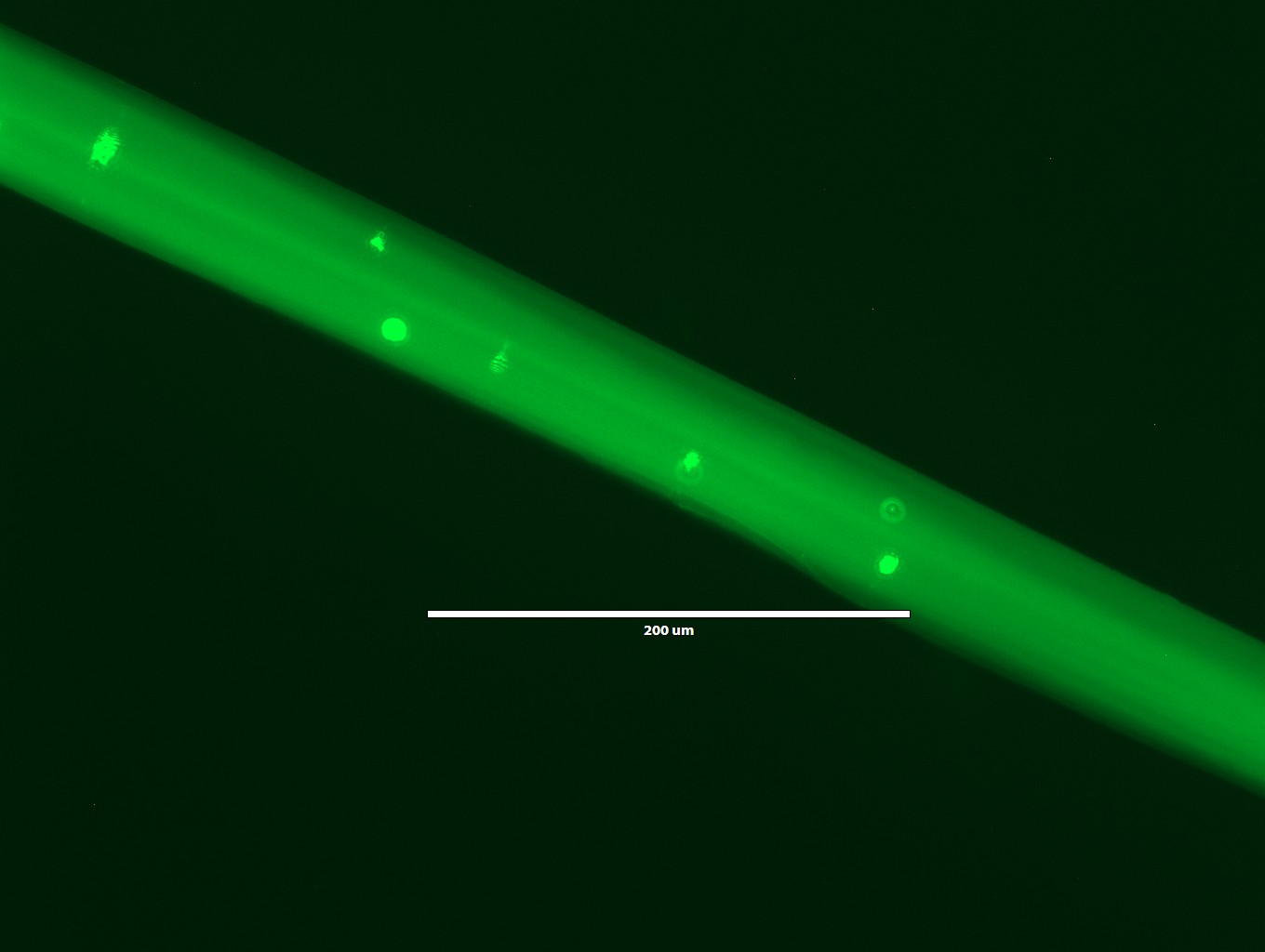Team:UCLA/Notebook/Materials/9 July 2015
Michael's Part
- Continuation of yesterday's dialysis
- Dialysis STOP: 12:30 PM, July 9
- extracted about 750 uL of double dialyzed silk.
- aliquoted 20 uL of concentrated dope, allowed to dry at 60 C
- weight of empty weigh boat: 0.596 grams
- weight of weigh boat + dry silk: 0.600 grams
- calculated w/v%: 20% w/v.
- Received a fraction of Tamura from Fasih and Jessica
- We need to dilute down the silk concentrate before spinning. I do not know the concentration of the Tamura, so I will be assuming that the Tamura is dilute enough to treat as water in the calculations. That is to say, instead of diluting the silk dope with water, I will be diluting it with the Tamura fraction.
- Let's spin 250 uL of the Tamura.
- To obtain 250 uL of "15% w/v silk," we need 187.5uL of the 20% w/v silk dope, and 62.5 uL of the Tamura fraction.
- However, before adding the Tamura fraction, we need to ensure that there are no particulates
- Currently, the fraction has a lot of particulates -- probably some coagulated silk, as well as some of the resin.
- Aliquot 500 uL of the fraction into a tube. Centrifuge at 5000 RPM for 10 minutes at 4 C.
- Transfer supernatant to a syringe with a filter tip, then inject into a new tube.
- Some problems
- Upon centrifugation, both the resin and the silk particles settle at the tube bottom (checked under UV box)
- I aliquoted another 250 uL of the fraction to syringe filter, all of the silk particles were trapped in the filter (checked under UV box).
- some things we can try:
- add more solvent to try to solubilize the Tamura particulates
- I took 2 mL of "Fraction 4" from the Functionalization team
- This solution is much more viscous, has much less particulates, and has comparable fluorescent intensity when checked under the UV box.
- I will take Fraction 4 and mix it with the silk dope.
- Considering how viscous both the silk dope and the Tamura fraction are, I should probably add some water to the mix
- Will add 50 uL of ddH2O to bring the total volume of hybrid dope to 300 uL.
- FINAL RECIPE that I am co-spinning:
- 50 uL ddH2O
- 185.7 uL of 20%w/v silk dope
- 62.5 uL of Tamura Fraction 4
- Extrude at rate of 6 uL/min into 70% v/v ethanol
- retroactive information added
- our Tamura fraction 4 was found to have a concentration of 146 ug/mL.
- Our recipe contained the total masses:
- b.mori silk: 0.037g
- Tamura: 9.125ug
- Our Tamura to b.mori silk ratio was 2.466E-6
- This is a very low ratio. Upping the ratio would increase fluorescent intensity. It also might destabilize the silk structure (which is already very unstable)
- All in all, the hybrid dope that we spun was 12.3% w/v.
- retroactive information added
- Results
- I think it worked!
- fibers formed without a problem
- checked for fluorescence under the UV box and under microscope. Note that for the following images, the co-spun silk thread was taken out to dry on the benchtop immediately after coming out of the tubing.
- This is a native bombyx mori silk thread. Magnification 40x. Excitation light intensity 100%.
- This is our co-spun silk thread. Magnification 40x. Excitation light intensity 100%.
- This is a native bombyx mori silk thread. Magnification 20x. Excitation light intensity 100%
- This is our co-spun silk thread. Magnification 20x. Excitation light intensity 100%
- Note several things:
- Our co-spun thread appears to have much greater fluorescent intensity than native silk thread.
- Our co-spun thread has a much larger diameter than native silk thread.
- We cannot rule out the possibility that the greater apparent fluorescence may be due to the co-spun thread simply having more mass
Spinning Apparatus Project
- Required Materials:
- 2 12V Stepper Motors
- 1 Arduino Uno R3(knockoff brand)
- Breadboards
- 2 Easy Driver v4.4
- 2 12V DC adapters
- Project Goal:
- The goal of this project is to create a system of two stepper motors spinning at different speeds to stretch and wind silk.
- Today's Progress:
- As seen below, I was able to hook up the Arduino to the Easy Driver, and then to a Stepper motor.


- The system worked incredibly well, however during the process of changing Easy drivers to test if both worked, a problem occured and I was unable to replicate the successful rotation.
- After Troubleshooting, I have determined the problem does not lie in the arduino, and so I have ordered 2 new easy drivers, with the belief that poor soldering on my part caused the failure in replication, as well as poor disconnection practices of the power sources( the external 12v DC adapter as well as the Arduino)
- The Easy Drivers will arrive on Saturday, Progress will continue at this time.



